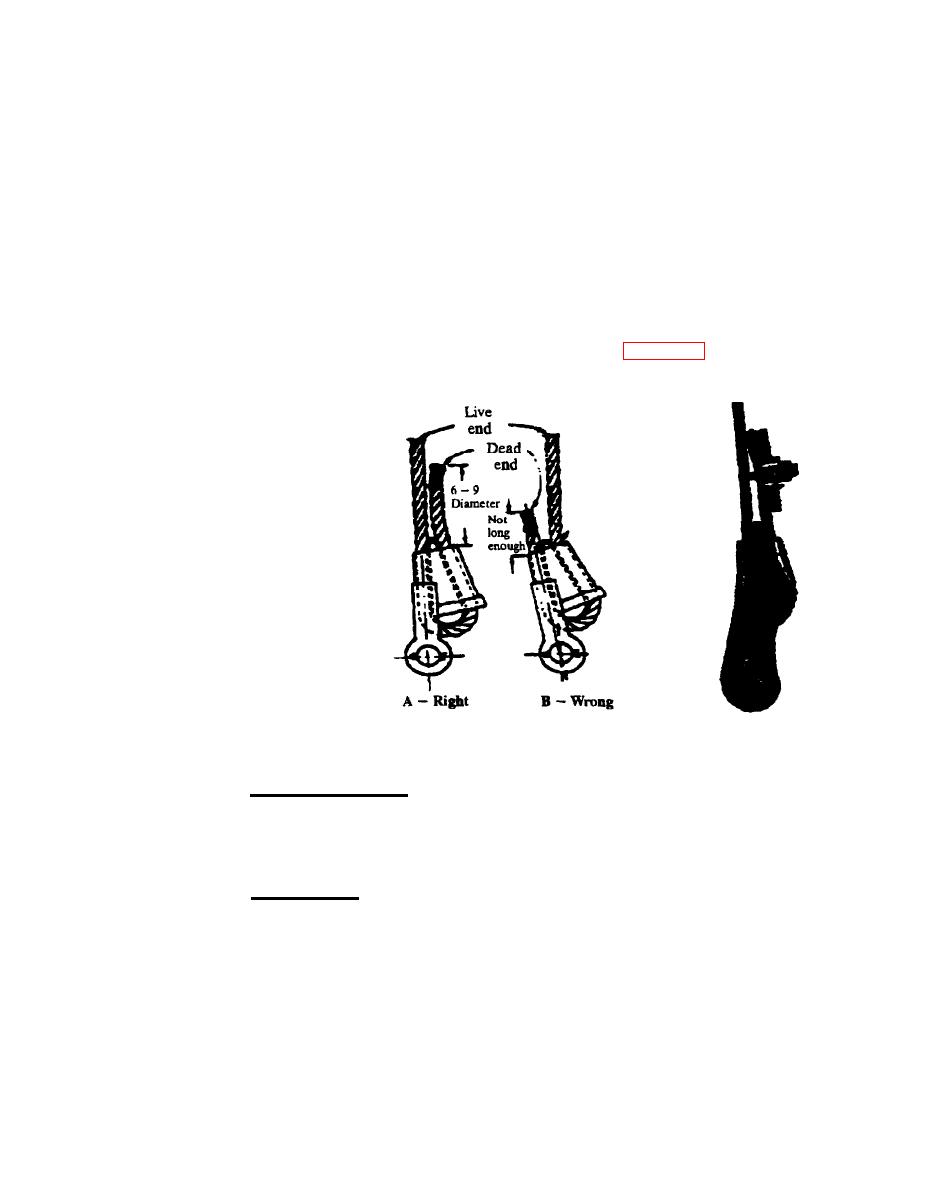 |
|||
|
|
|||
|
|
|||
| ||||||||||
|
|
 TB 43-0142
NOTE
To assemble a satisfactory end-to-end connection, the number of clips
indicated in the table above should be increased by two, with the torque
remaining unchanged. Replace thimbles which are distorted or excessively
worn.
(c) One of the more popular end attachments for wire ropes is the wedge socket. There
should be no rough edges or burrs on the wedge or socket when installed. If the end of the rope is
welded, the welded end should be cut off. This will allow the distortions of the rope strands, caused by
the sharp bend around the wedge, to adjust themselves at the end of the line. The dead end of the
rope should extend from the socket for a distance of 6 to 9 times the rope's diameter. The dead end of
the wire should be clamped to a short extra piece of rope as dose to the wedge as possible. The dead
end of the wire should never be clamped to the live end. The U-bolt bears against the tail and the
saddle of the clip should bear against the short extra piece; see Figure C-7.
Figure C-7. Wedge Sockets
(6) Minimum sling length. Between splices, sleeves, or end fittings, cable laid slings and 6
x 19 and 6 x 37 wire rope slings shall have a minimum clear length of rope ten times the rope
diameter. Between loops or end fittings, braided slings shall have a minimum clear length of rope forty
times the component rope diameter. Grommets and endless slings shall have a minimum
circumferential length of 96 times the body diameter of the grommet or endless sling.
(6) Rated capacity. Rated capacities for slings shall be as shown in Tables 1910.184.1
through 1910.184.22 of 29 CFR Part 1910.184 of the General Industry Standards-
(a) Nominal wire rope breaking strength.
(b) Splicing or end attachment efficiency.
(c) Number of parts of rope in sling.
(d) Type of hitch, e.g., straight pull, choker hitch, or basket hitch.
(e) Angle or Loading
(f) Diameter of curvature around which the sling is bent.
C-5
|
|
Privacy Statement - Press Release - Copyright Information. - Contact Us |